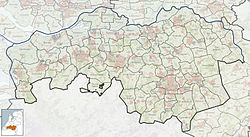
The Zuid-Willemsvaart is a canal in the south of the Netherlands and the east of Belgium.

The Catholic Cathedral Church of St. John (Sint-Janskathedraal) of 's-Hertogenbosch, North Brabant, is the height of Gothic architecture in the Netherlands. It has an extensive and richly decorated interior, and serves as the cathedral for the bishopric of 's-Hertogenbosch.

Oploo is a village in the Dutch province of North Brabant. It is located in the former municipality of Sint Anthonis. Since 2022 it has been part of the new municipality of Land van Cuijk.

Rijkswaterstaat, founded in 1798 as the Bureau voor den Waterstaat, is a Directorate-General of the Ministry of Infrastructure and Water Management of the Netherlands, the former Ministry of Transport, Public Works and Water Management. Its role is the practical execution of the public works and water management, including the construction and maintenance of waterways and roads, and flood protection and prevention. The agency was also involved in the construction of big railway projects such as the Betuweroute and the HSL-Zuid.

The Voorne Canal is a former ship canal on Voorne-Putten in South Holland, the Netherlands. It was the first canal to connect Rotterdam to the sea. Construction of the canal started in 1826 and was completed in 1829. Until the completion of the Nieuwe Waterweg in 1872 it was the main connection from Rotterdam to the sea for ocean going ships.

HNLMS Heiligerlee, formerly known as Panter, was a Heiligerlee-class monitor built in England for the Royal Netherlands Navy in the 1860s. Among the new ships built for the Dutch navy Heiligerlee was the first true monitor: a ship with shallow draught, only a few (heavy) guns and decent armor. These characteristics made her very suitable to operate way inland in the Dutch delta.

The Jheronimus Bosch Art Center is located in the former New St. James Church on Jeroen Boschplein in 's-Hertogenbosch, the capital of North Brabant. Since 2007, there has been a permanent retrospective exhibition here on the life and work of the painter Jheronimus Bosch, who was born in the town. The venue is also used for concerts and conferences.

Bokhoven Castle was a big defendable castle in Bokhoven, the Netherlands. A moat and part of the northern wall of the outer bailey are all that reminds of the castle.

The Swan Brothers' House in 's-Hertogenbosch is a museum and the home of a famous medieval confraternity.
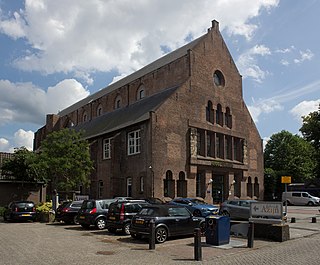
The Big Arsenal, in Dutch: Groot Tuighuis, in 's-Hertogenbosch, Netherlands, is also known as Old St. James Church, or Oude Sint Jacobskerk. It is the former location of the Noordbrabants Museum. It now houses the municipal heritage department and its storage. It is open to visitors four days a week.
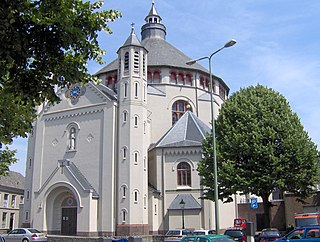
St. Catherine's Church, in Dutch Sint-Catharinakerk was previously named Cross Church, Kruiskerk or Kruisherenkerk and is located at the Kruisbroedershof.

The Lutheran Church of 's-Hertogenbosch is a former church in 's-Hertogenbosch.

The City Gymnasium of 's-Hertogenbosch is a grammar school, which is known as a gymnasium in the Netherlands. It is the second oldest school of the Netherlands.
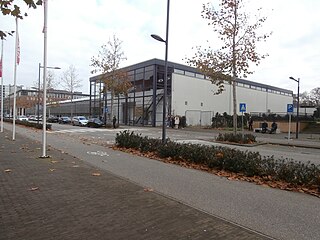
The Royal Academy of Arts and Design was an academy for art education in 's-Hertogenbosch. In 2004 it merged with the Art Academy St. Joost from Breda to become the Academy of Art and Design St. Joost located in both Breda and 's-Hertogenbosch.

Engelen Lock is a lock with vertical-lift bridge in the Dieze Canal near Engelen, North Brabant, just before the canal exits into the Meuse.

Sint-Michielsgestel is a village in the municipality of Sint-Michielsgestel, Netherlands.

Tongelaar Castle is located between Mill and Gassel in North-Brabant, Netherlands.
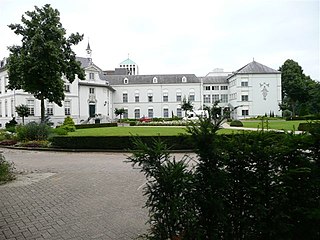
Boxmeer Castle is an originally 13th century castle in Boxmeer, North-Brabant, Netherlands. It is situated on a former island in the Meuse.

The Wilhelmina Canal is a canal in North-Brabant, Netherlands. It connects Tilburg to the Meuse, and continues to the east to connect to the Zuid-Willemsvaart north of Helmond.

